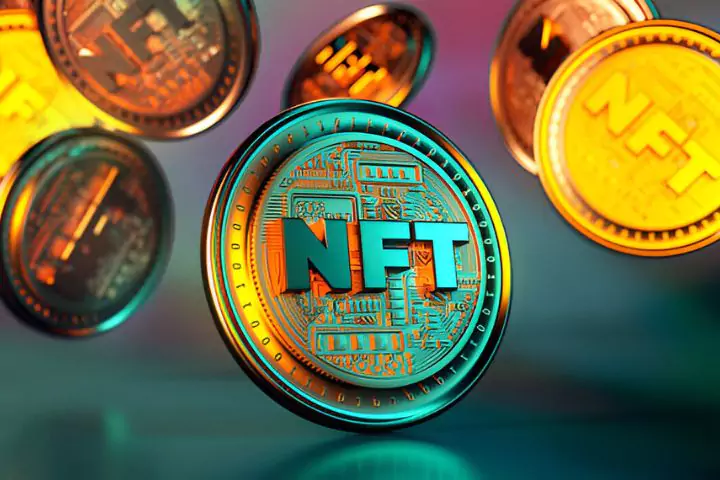In the ever-evolving world of blockchain technology and digital assets, a new concept has emerged that combines the unpredictability of randomness with the uniqueness of non-fungible tokens (NFTs). This concept, known as NFTRandomize, is revolutionizing the way we think about digital ownership, value, and scarcity. In this comprehensive guide, we’ll explore what NFTRandomize is, how it works, its applications, and its potential impact on the future of digital assets.
What is NFTRandomize?
NFTRandomize is an innovative approach to creating and distributing non-fungible tokens that incorporates elements of randomness into the minting, distribution, or characteristics of the NFTs. This process adds an extra layer of excitement, unpredictability, and fairness to the NFT ecosystem.
Key aspects of NFTRandomize include:
- Random generation of NFT attributes
- Unpredictable distribution mechanisms
- Dynamic and evolving NFT characteristics
- Fair and transparent allocation processes
How Does NFTRandomize Work?
Here is the working of NFTRandomize:
The Technical Foundation
At its core, NFTRandomize relies on robust random number generation (RNG) algorithms integrated into smart contracts on blockchain platforms. These algorithms ensure that the randomization process is:
- Transparent
- Verifiable
- Tamper-proof
- Fair for all participants
The Randomization Process
The NFTRandomize process can be applied at various stages of an NFT’s lifecycle:
- Minting: Random attributes are assigned to the NFT at the moment of creation.
- Distribution: NFTs are allocated to buyers or participants using a random selection mechanism.
- Evolution: NFT characteristics change over time based on random events or triggers.
Smart Contract Integration
NFTRandomize leverages smart contracts to execute the randomization process. These contracts typically include:
- RNG functions
- Attribute assignment logic
- Distribution algorithms
- Trigger mechanisms for evolving NFTs
Applications of NFTRandomize
The concept of NFTRandomize has found applications in various sectors of the digital economy. Let’s explore some of the most prominent use cases:
1. Collectible NFTs
Collectible NFTs have been one of the primary beneficiaries of the NFTRandomize concept. Examples include:
- Random Attribute Assignment: Digital collectibles with randomly generated characteristics, creating unique and rare items.
- Blind Box Distributions: Collections where buyers don’t know which specific NFT they’ll receive until after purchase.
- Evolving Collections: NFTs that change over time based on random events or user interactions.
2. Gaming
The gaming industry has embraced NFTRandomize to enhance player experiences and create more engaging gameplay mechanics:
- Random Loot Drops: In-game items represented as NFTs with randomized attributes or rarity.
- Procedurally Generated Content: Game worlds or characters created using NFTRandomize algorithms.
- Dynamic NFT Abilities: Game assets that evolve or change abilities based on random factors.
3. Digital Art
Artists and creators are using NFTRandomize to push the boundaries of digital art:
- Generative Art: Artwork created through algorithms with random elements, minted as unique NFTs.
- Interactive Installations: Digital art pieces that change based on random inputs or viewer interactions.
- Collaborative Randomized Projects: Multi-artist collections where random elements determine collaborations.
4. Finance and Investment
The financial sector is exploring NFTRandomize for various applications:
- Random Reward Distribution: Staking or yield farming protocols that use randomization to allocate bonus rewards.
- NFT-based Lotteries: Transparent and verifiable lottery systems using NFTRandomize for winner selection.
- Risk Assessment Tools: Financial instruments that incorporate random elements to model real-world unpredictability.
Benefits of NFTRandomize
The integration of randomness into the NFT ecosystem offers several advantages:
- Enhanced Scarcity: Random attributes can create truly unique and rare digital assets.
- Fairness in Distribution: Random allocation methods can level the playing field for NFT acquisitions.
- Increased Engagement: The element of surprise keeps users interested and involved.
- Dynamic Ecosystems: Randomization allows for evolving and adaptive NFT-based systems.
- Transparency: Verifiable random processes build trust in NFT projects.
Challenges and Considerations
While NFTRandomize offers exciting possibilities, it also presents some challenges:
1. True Randomness
Achieving true randomness in computer systems is notoriously difficult. NFTRandomize projects must carefully consider their RNG implementation to ensure fairness and unpredictability.
2. Gas Costs
Random number generation and complex attribute assignments can lead to higher gas costs on blockchain networks, potentially impacting the scalability of NFTRandomize projects.
3. User Experience
Balancing the excitement of randomness with user expectations can be tricky. Projects must carefully design their NFTRandomize mechanisms to avoid frustration or disappointment.
4. Regulatory Concerns
Some NFTRandomize implementations, particularly those involving financial elements, may face scrutiny from regulators due to similarities with gambling or lottery systems.
The Future of NFTRandomize
As the NFT ecosystem continues to evolve, we can expect to see further innovations in the NFTRandomize space:
- Cross-chain Randomization: Implementations that leverage multiple blockchain networks for enhanced unpredictability.
- AI-powered NFTRandomize: Integration of artificial intelligence to create more sophisticated and adaptive random systems.
- Real-world Data Integration: Using external, real-world data sources to influence NFTRandomize processes.
- Customizable Randomness: Allowing users to influence the randomization process within predefined parameters.
Best Practices for Implementing NFTRandomize
For developers and project creators looking to incorporate NFTRandomize into their projects, consider the following best practices:
- Use Verifiable Random Functions (VRFs): Implement cryptographically secure random number generation.
- Ensure Transparency: Provide clear documentation and open-source code for your randomization processes.
- Balance Randomness and Control: Find the right mix of unpredictability and user agency to create engaging experiences.
- Stress Test Your Systems: Thoroughly test your NFTRandomize implementations to ensure they can handle high demand and various edge cases.
- Consider Scalability: Design your randomization processes with network efficiency in mind to minimize gas costs and transaction times.
Conclusion
NFTRandomize represents a fascinating convergence of blockchain technology, digital scarcity, and the unpredictable nature of randomness. As the concept continues to evolve and find new applications, it has the potential to revolutionize how we interact with digital assets, create and distribute art, and even approach financial systems.
The challenges presented by NFTRandomize are not insignificant, but they are far outweighed by the possibilities it offers. From creating truly unique digital collectibles to designing more engaging gameplay experiences, the integration of randomness into the NFT ecosystem opens up a world of creative and technical opportunities.





